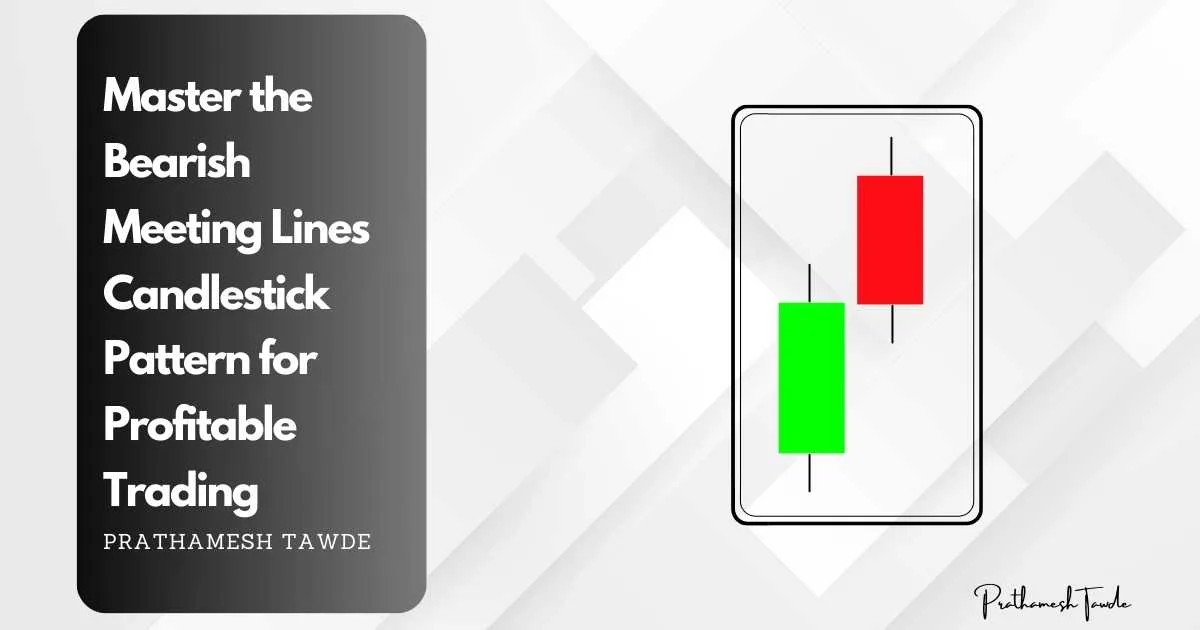Bullish Harami Pattern :- Detailed Guide On How To Trade ?
- Snehal Patel
- April 25, 2024
Understanding Harami Pattern
What is a Harami Pattern?
The pattern occurs when a smaller candlestick is inside a larger one. The smaller one is called the “child” and the larger one is the “mother.” The harami pattern suggests market indecision. The smaller candlestick may signal a reversal.

Definition and Significance
A bullish harami is a two-candle pattern. It shows a potential reversal in a downtrend. The pattern consists of a big bearish candle. A smaller bullish candle follows it. The small candle is completely engulfed within the body of the big one. This formation suggests selling pressure is weakening. It hints at a possible shift to bullish momentum.
Components of Harami Pattern
To recognize a bullish harami, one must understand its components:
First Candle: A large bearish candle that reflects the prevailing downtrend.
Second Candle: It is a smaller bullish candle. It is entirely within the body of the first candle.
Characteristics of a Bullish Harami Pattern
The second candle represents bullish momentum. It is notably smaller than the first bearish candle.
Engulfment occurs when a bullish candle is fully engulfed by a bearish candle.
Colour: The bullish candle can be of any colour but is often white or green to indicate upward movement.
How to Spot Bullish Harami on a Price Chart
Traders typically look for the following indicators to identify a bullish harami:
A significant downtrend preceding the pattern.
A smaller bullish candle follows a large bearish candle.
We confirm this through volume analysis. Volume decreases during the formation of the bullish harami.
Psychology Behind pattern
The bullish harami pattern reflects shifts in market psychology and investor sentiment. The shift from a bearish trend to a potential bullish reversal shows a change in the market. It is influenced by factors like economic data, geopolitical events, and investor behaviour.
Interpretation of Bullish Harami Pattern
The bullish harami suggests a transition from bearish sentiment to potential bullish momentum. The smaller bullish candle is inside the larger bearish candle. It means a time of indecision and consolidation in the market.
Market Sentiment During Formation
During a bullish harami’s formation, traders may feel uncertain. The market swings between bearish and bullish forces. But, the pattern emergence signals a possible trend reversal. This has renewed buyer optimism.
Trading Strategies
Traders use bullish harami patterns. They aim to profit from possible reversals and price rises.
Entry and Exit Points
Traders often enter long positions at the start of the candle. This is after a bullish harami pattern. They expect a bullish continuation.
Exit Point: Traders may take profits at resistance levels. They may also do so based on trailing stop-loss orders. These steps secure gains while cutting potential losses.

Risk Management Techniques
To reduce risks from trading patterns, traders use risk management techniques. For example:
Setting stop-loss orders to limit losses in case of adverse price movements.
Diversifying portfolios to spread risk across multiple assets and markets.
Real-life Examples

Advantages and Limitations
Bullish harami patterns offer opportunities for traders. But, it is essential to consider their pros and cons.
Benefits of Using candlestick pattern in Trading
Early Reversal Signals: Patterns show early signs of potential trend reversals. They let traders enter at good prices.
Easy to spot: Bullish harami patterns are simple. Traders of any experience level can spot them.
Constraints and Considerations
False Signals: Like any indicator, patterns are not foolproof. They may sometimes give false signals. These signals can lead to losses if not confirmed by other indicators.
The effectiveness of patterns can vary. This depends on market conditions, volume, and other factors. It requires careful analysis and confirmation.
Using candlesticks in Technical Analysis
Incorporating bullish harami patterns into broader technical analysis frameworks can enhance trading strategies. Combining these patterns with other indicators can provide extra signals. Other indicators include moving averages, RSI, and MACD. They can improve decision-making.
Historical Performance and Backtesting
Studying bullish harami patterns’ past performance through backtesting can give valuable insights. It can show how well they work. Traders can assess how often these patterns succeed. They do so across different market conditions and timeframes. This enables them to improve their trading strategies.
Conclusion
In conclusion, the bullish harami pattern is a valuable tool. It helps traders find potential trend reversals and profit from bullish market sentiment. Understanding its parts, traits, and trading strategies can empower traders. They can use their knowledge to make decisions. They can also navigate fast-changing financial markets well.
A bullish harami is a two-candlestick pattern. It shows a potential reversal from a downtrend to an uptrend. It is a large bearish candle followed by a smaller bullish one. The second candle’s body is completely within the range of the first candle’s body.
To find a bullish harami, look for a big red candle (showing a large drop). It is followed by a smaller green candle. The green candle should be fully contained within the range of the previous red candle’s body. This pattern typically appears at the bottom of a downtrend.
Yes, the bullish harami pattern works in all markets. These include stocks, forex, commodities, and cryptocurrencies. It’s a versatile pattern. It reflects changes in market sentiment. This is true for any traded asset.
Traders can make bullish harami patterns more reliable. They can do this by confirming them with other indicators. They can use moving averages, trendlines, or volume analysis. These tools check for potential reversal signals.





